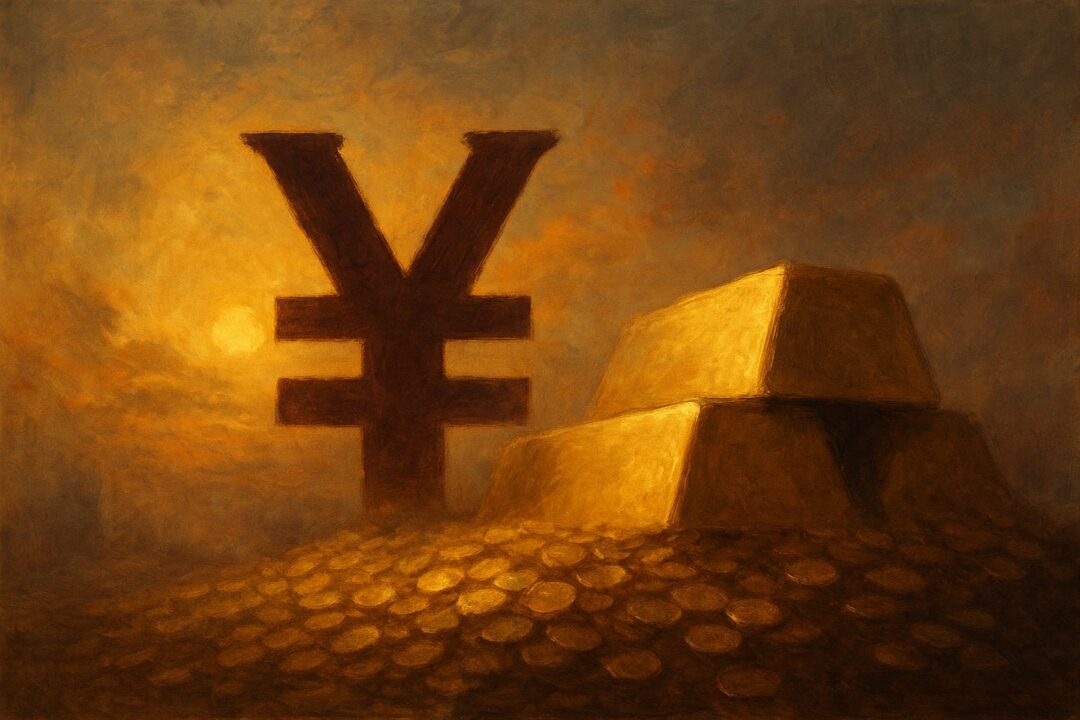There’s growing chatter about de-dollarization, geopolitical diversification, and the slow but steady shift by countries away from U.S. Treasuries. While most of the focus is on top holders like China and Japan, foreign governments and central banks collectively hold around $8.8 trillion in U.S. Treasury securities as of early 2025.
That begs the question:
What would happen if some of that money — over $8 trillion — started flowing into gold?
Let’s run through a basic (but very imperfect) thought experiment.
First, a Disclaimer
This math is very rough and completely inexact and oversimplified and most definitely doesn’t consider all the multitude of complicated financial and geopolitical deals factors that influence gold prices. Real-world markets are far more complex. This analysis won’t capture:
- Timing and speed of capital movement
- Central bank coordination (or lack thereof)
- Supply constraints, futures market leverage, or derivatives
- Behavioral feedback loops in pricing
Still, it’s useful for directional thinking — and the results are… intense.
Step 1: Assume 25% of Foreign Treasury Holdings Go Into Gold
Let’s start with a modest reallocation scenario: 25% of the $8.8 trillion in foreign-held Treasuries is sold off and moved into gold.
$8.8 trillion x 25% = $2.2 trillion allocated to gold.
This accounts for the fact that no rational reserve manager would go all-in on gold. Diversification would still favor other sovereign bonds, FX reserves, commodities, and potentially even infrastructure or equities.
Step 2: Apply a Market Multiplier
Gold is a thin market compared to global debt markets. Price is set at the margin. When major demand surges hit, prices move fast — and disproportionately. Historically, price multipliers in asset markets with thin liquidity can reach 5x to 20x, depending on market sentiment and positioning.
Let’s go with the higher end — a 20x multiplier, to simulate the shock of sovereign-scale gold accumulation.
$2.2 trillion x 20 = $44 trillion in added market cap (spread over many years).
Step 3: Recalculate Gold’s Market Cap and Price
Gold’s estimated current market cap is about $20 trillion.
New market cap = $20T + $44T = $64 trillion
Since gold supply doesn’t suddenly change (you can’t just mine more overnight), the price per ounce would presumably rise roughly in proportion:
- $64T / $20T = 3.2x increase
- Current price ≈ $3,300/oz
- New price ≈ $10,560/oz
The Bottom Line (And the Big “What If”)
If just a quarter of all foreign-held Treasuries were rotated into gold, the price could theoretically surge to over $10,000 per ounce, assuming a 20x market cap multiplier. And that’s a conservative allocation. If more capital flowed in — or if panic dynamics kicked in — the price impact could be far more extreme.
This simple model doesn’t account for:
- Central bank coordination or competition
- Indirect exposure via ETFs or derivatives
- Velocity and timing (e.g., panic vs. gradual rebalancing)
- Reactions from U.S. monetary policy and global FX markets
- Spillover into commodities, crypto, or inflation hedges
So, Would This Ever Actually Happen?
All at once? No. Gradually? Over many years. Possibly.
Countries like China and Russia have reduced Treasury exposure while increasing gold reserves. Others are exploring multi-polar reserve strategies, including gold, the euro, the yuan, and even digital assets.
This isn’t about a mass exodus. It’s about a gradual but powerful reallocation trend — and if it ever were to accelerate, the gold market could re-rate entirely.
Final Thought
The idea that gold is “just a shiny rock” doesn’t hold up in a world where $8.8 trillion in sovereign capital could begin to look for a new home.
$2.2 trillion in buying pressure. A 20x multiplier. Gold at perhaps over $10,000 (or more).
That’s not a forecast of course. But perhaps a possibility.
Bonus: What If Tokenized Gold or a U.S. Gold Revaluation Enters the Picture?
The story doesn’t end with sovereigns selling Treasuries and buying gold. There are two additional scenarios worth considering — both of which could radically reshape the role of gold in the global financial system.
1. Tokenized Gold Goes Mainstream
Imagine a world where gold is no longer just a physical commodity stored in vaults or a ticker on a futures market — but a programmable, borderless, tokenized asset on public blockchains.
If tokenized gold adoption scales, we could see:
- Greater liquidity: 24/7, peer-to-peer gold trading globally, without intermediaries
- Fractional ownership: People and institutions could hold $10 or $10 million in gold equally easily
- Monetization of idle reserves: Central banks or private vaults could lend tokenized gold, creating entirely new credit markets
- Integration with DeFi: Gold becomes usable collateral, stablecoin backing, or yield-generating asset
If even a fraction of the world’s gold is tokenized and plugged into programmable finance systems, it could create massive demand — and add a layer of utility that fundamentally transforms gold from a passive store of value into an active layer of the financial stack.
2. The U.S. Revalues Its Gold Reserves
Another wild — but not impossible — scenario is the U.S. government choosing to revalue its official gold reserves. The U.S. holds over 8,100 metric tons of gold, priced on its books at just $42.22/oz — a Cold War-era relic.
What if America said: “Let’s mark it to market at $5,000/oz — or higher”?
That would create several shockwaves:
- Massive balance sheet expansion: The Treasury could create trillions in accounting surplus
- Debt management tool: Revalued gold could be monetized to pay down a portion of the national debt
- Creation of a sovereign wealth fund: The U.S. could capitalize a national investment vehicle, funded by gold revaluation gains, to invest in strategic sectors
- Psychological impact: A revaluation could reset the global narrative around gold, fiat money, and U.S. financial strength
Of course, this kind of move would have major consequences — inflationary risks, trust dynamics, and geopolitical reaction would all need to be carefully managed (and would be incredibly disruptive).
Note: The U.S. Also Holds Its Own Treasuries
While this post focuses on foreign-held Treasuries, it’s worth noting that the United States itself holds approximately $25 trillion of its own debt — primarily through the Federal Reserve, Social Security Trust Fund, and other intragovernmental holdings.
This means the total U.S. Treasury ecosystem is far larger than just the $8.8 trillion held by foreign nations. Any large-scale revaluation of gold, debt monetization, or shift in global capital flows would ultimately interact with both the external and internal sides of America’s balance sheet.
In short: this isn’t just about foreign countries. The entire U.S. financial system is built around Treasuries — and that makes any shift toward gold or alternative stores of value a much bigger story than it first appears.
NOTE ALSO worth comparing is the total US debt of approximately $35 trillion (not to mention the hundreds of trillions of unfunded liabilities) to the total gold market cap also. But that’s a subject/topic for another day!
Final Word
Whether through tokenization (not likely any time soon) or revaluation, the future of gold could look very different than its past. It may no longer just be a hedge — but could once again become a core layer of the financial architecture.
Discover more from Brin Wilson...
Subscribe to get the latest posts sent to your email.



